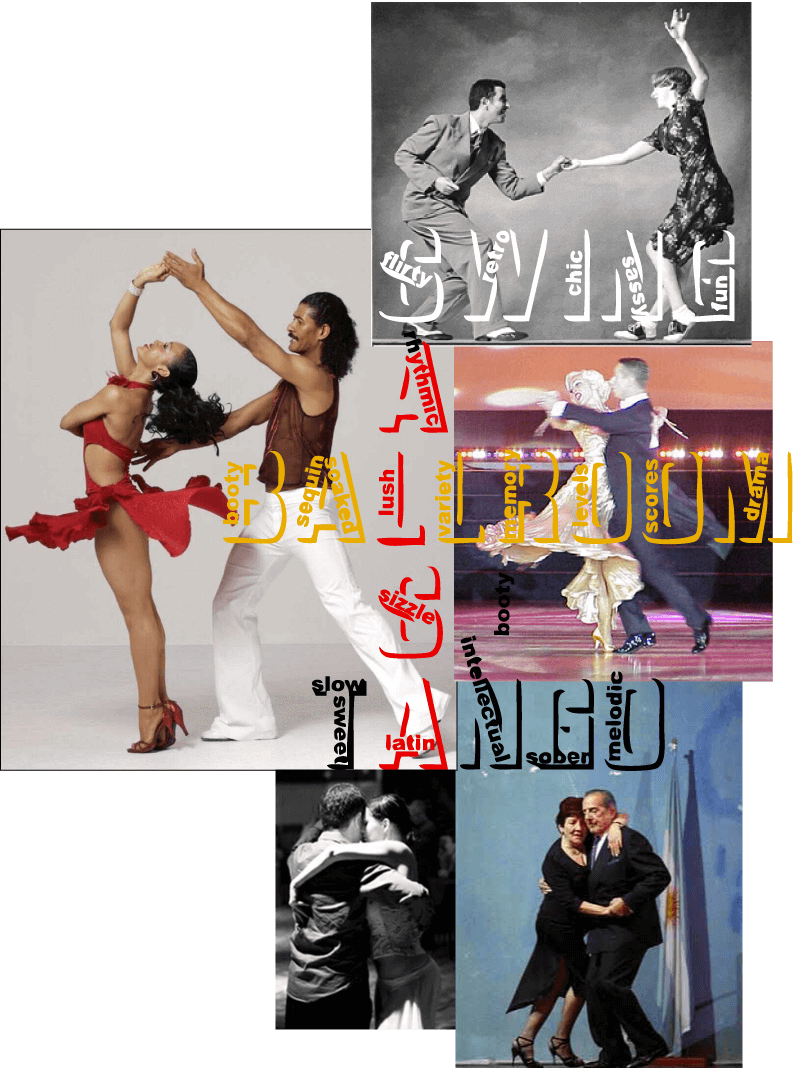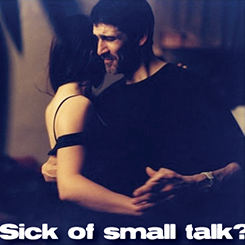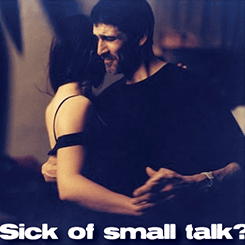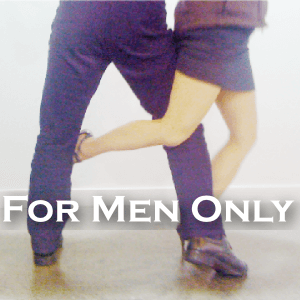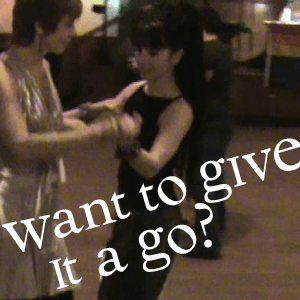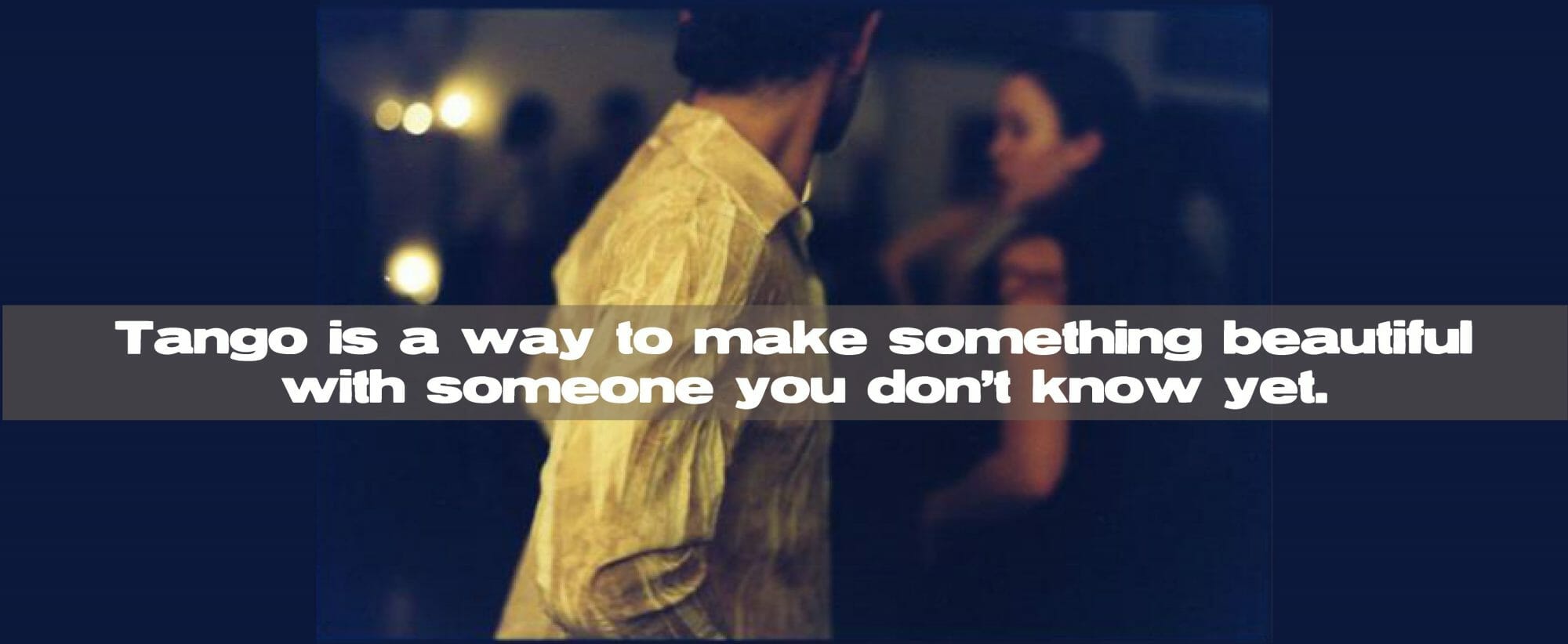Partner dances have one wonderful thing in common, which is that you get to play with someone and music.
Each of the popular social dances offers a different experience, on many levels.
- The music!
- The social atmosphere.
- What people wear.
- The dance’s own mood.
- The structure of the dance.
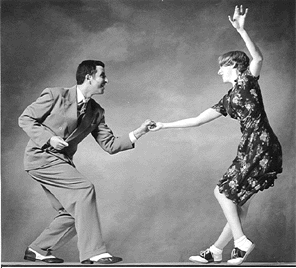
Swing
Swing (also known as Lindy Hop and Rock-n-roll dancing) is an American dance developed from the 1920s through the 1950s, but contemporary swing dancers can rock it to a wide variety of music.
Swing dancers tend to be happy, smiley people who like to be silly. The social atmosphere is egalitarian and lighthearted, women are welcome to lead and to ask men to dance.
If you like vintage 1920s, 1940s, and 1950s fashion, swing is a great opportunity to dress up and play with this era. For shoes, women can wear retro baby-doll heels, but most dancers wear white or colorful flat sneakers.
Swing dance has a playful mood that alternates between a sense of relaxed ease and silly surprise. Dancers’ attention is on having fun with their partner.
The dance has a basic sequence that you will have to memorize (but it will soon become second nature) and you will have to hit your steps to the music as you move. Like salsa, in between the basic step, spins, turns, dips, and even jumps can be led.
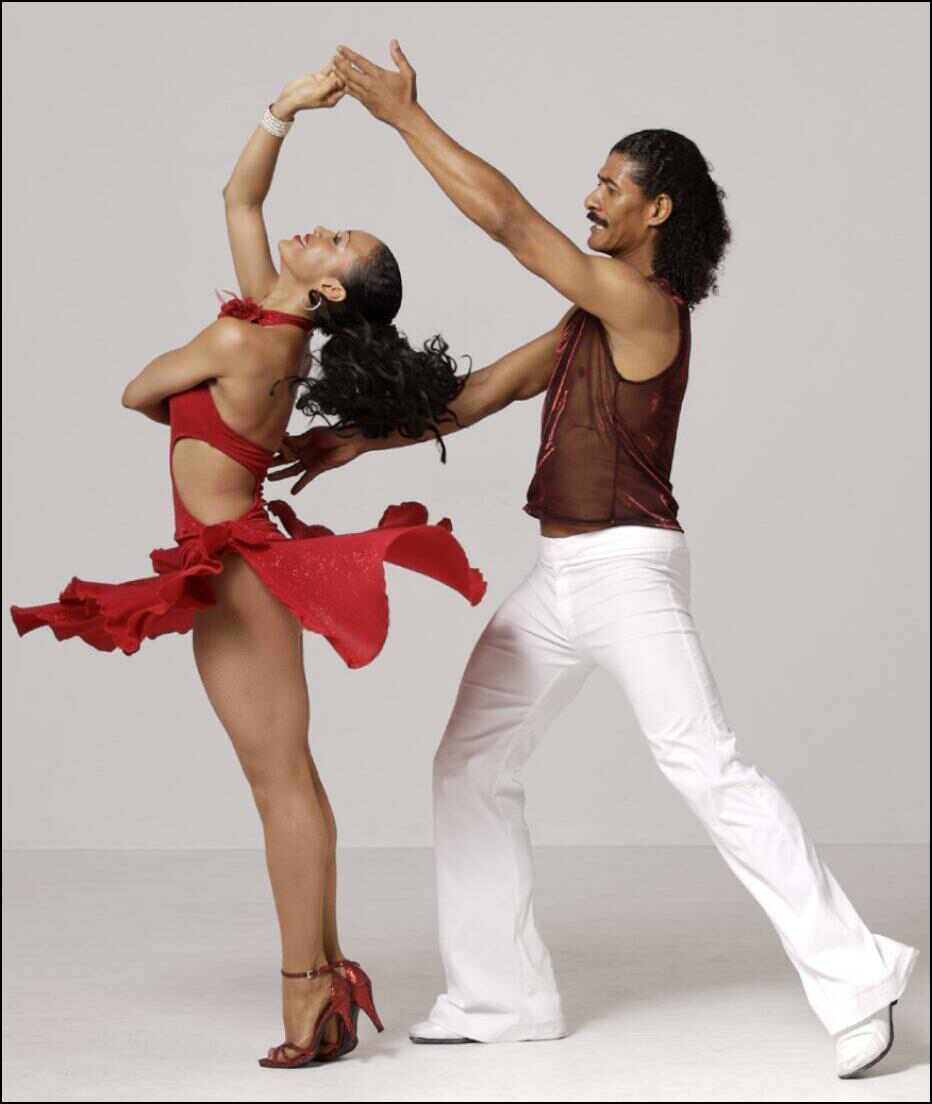
Salsa
Salsa was a Caribbean-inspired dance that developed in New York in the 1970s but has been embraced and developed throughout the Latin World. The music is Cuban and Puerto Rican.
The salsa atmosphere is friendly, flirty, and warm. People flash sexy smiles while they’re dancing. Women are welcome to lead friends to dance salsa.
The clothing style is 1970s sexy club clothing. You can wear tight clothes and show a lot of skin. Women usually wear sexy stiletto heels.
The mood of the dance itself is sexy, encouraging dancers to show off their sass and ass to their partner and to admiring onlookers.
Like swing, salsa dance has a basic sequence that you will have to memorize and you will have to hit the beat with your steps. The leader will lean pivots, turns, releases, and other fun stuff which allow the partners to separate and come back together in many interesting ways.
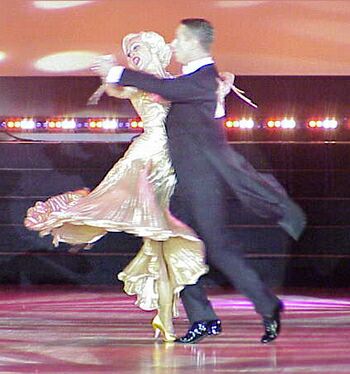
Ballroom
Ballroom dancing as we know it today dates to the 1920s, when partner dances became simultaneously popularized and regularized. It is actually a set of 10 dances ( five International Standard and five International Latin style dances, including what is known as “Ballroom Tango”). If you take ballroom dancing classes, you will learn a whole bunch of different dances. Each has its own music.
Unlike the other social dances, the competitive aspect of ballroom dancing is a big part of the lives of social dancers, with students encouraged and groomed to compete. For most ballroom dancers, social dancing is secondary to regular participation in competitions. This also means that unlike the other social dances, ballroom dancers generally have (and need) a main partner with whom to prepare for competitions. Teachers are also coaches, with the parental relations this always elicits. Ballroom is known for drama associated with partnerings, schools, judging, and the competitions themselves. Ballroom dancing is serious business.
Clothing for ballroom dancing is the most extravagant. If you love sequins and sparkles, satin and chiffon, tuxedos and patent leather shoes, ballroom is the dance for you! Women wear low heels (very pretty ones).
Each ballroom dance has its own mood, but all have a performance-oriented aesthetic. Even when dancing socially, ballroom dancers are thinking about styling their moves in the way that is idealized for that particular dance. There are lots of fancy hand flourishes, arching of the upper body, and stage-size smiles.
The ballroom dances are the most structured, with very specific choreographies for each dance that must be memorized. The leader leads in order to keep the couple coordinated, but the follower is expected to also memorize the choreography.
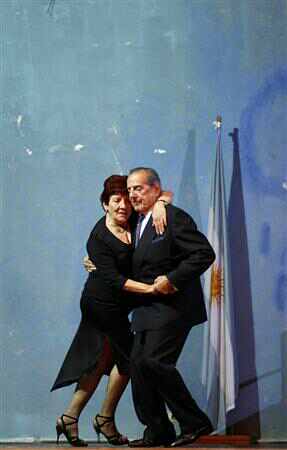
Argentine Tango
Argentine Tango dance originated in Buenos Aires in the late 1800s. The music developed in Montevideo Uruguay and Buenos Aires out of the fusion of cultures mixing in those cities. The dance is a fusion of habanera and central African dances. At most social dances all the music played was recorded during the 1940s, the “golden era” of tango. Many dancers refuse to dance to newer tango music. Some DJs do play contemporary tango orquestras’ recording of the classic songs. There is some new music, but it is rarely played. A radical tango viewpoint is that tango can and should be danced to any music that is interesting and arouses emotion. (About music.)
The social atmosphere of tango is usually what we describe as “heavy” or serious. This means that social relations are very formal. In fact there are strict codes by which dancers interact. Leaders ask for the dance, not followers, dances are contracted non-verbally, and the partners dance together for a specified period before separating, so as to protect one another’s egos from rejection. (About etiquette.) Most dancers do not have a main partner, so there is a lot of mixing at tango events. Partners, when they are present, are treated with a lot of respect. Women are discouraged from –and sometimes punished for– leading, and men rarely follow. While tango competitions do exist, they are irrelevant to the lives of the vast majority of tango dancers, for whom social dancing is the center of their lives. Tango dancers tend to be intellectual or analytic types, disinterested in small talk.
Clothing for tango is formal and subtly sexual but not glamorous. Within that there’s a wide range of possibilities. Sparkles are ok, so long as they won’t be uncomfortable on the man’s hand, or catch on his clothing (no beads or sequins). Short or tight skirts are not worn. Skirts are generally knee-length and open to allow movement of the legs. (About what to wear.) Most women wear high heels, but some women wear lower heels or black split-sole dance sneakers. (About shoes.) Men wear whatever they want, usually dress pants and a button-down shirt, but many choose to wear a suit jacket. (For the most formal occasions, men wear a suit, but not a tuxedo.) Shoes for men are a main source of personal expression, with lot of colors and styles.
The mood of Argentine Tango dance is focused on the experience inside the embrace, with the partner. Eyes are downcast or even closed (for the follower), the face is unexpressive, and most dancers do not smile. The dancers put their full concentration into the quite challenging task of moving as one, which requires perfect body control at every moment, and, when successful, is emotionally elating. Because the focus of the dance is on the internal experience, rather than a performance for spectators, no agility is required to enjoy the dance. Like swing dancing, there are a range of dramatic moves that can be used by agile dancers (these moves are seen more often on television and in stage shows than at social dances, but can be used there) and these are spectacular to watch and joyful to experience. But they are not necessary. People dance tango into their 80s and 90s, indeed, as long as they can walk.
Uniquely among the partner dances discussed here, there is no basic sequence in tango. The leader can lead anything from the tango lexicon, in any order, any time. Since each motion is led and followed, the skill of clear and supportive leading is highly refined and admired, as is sensitive following. He can use different dynamics of motion to make the same move look and feel different for different music and the follower has to follow all of that. He also chooses what part of the music to dance to (rhythm, melody, or a particular instrument) and he can change his musical attention as much as he wants throughout a song. Every leader creates his own personal style, and may take on different characters depending on the music, his mood, and what he wants to express. Since there are no sequences to memorize, the leader’s understanding of the structure of the dance is analytic, and the follower’s is more like meditation. The dancers must trust one another to remain fully present at all times and not to become distracted from the flow of communication even for an instant.
